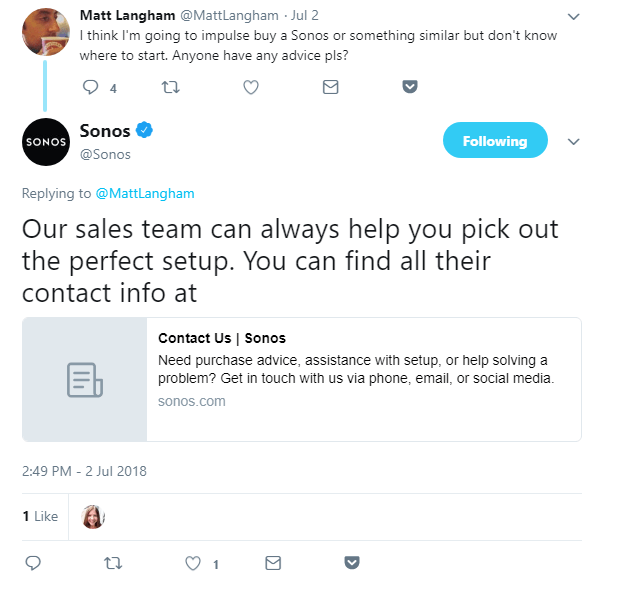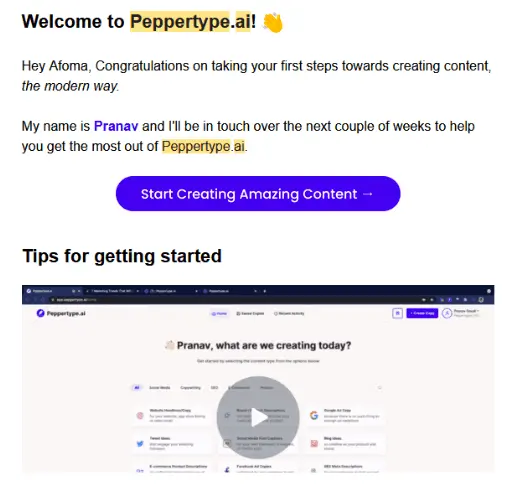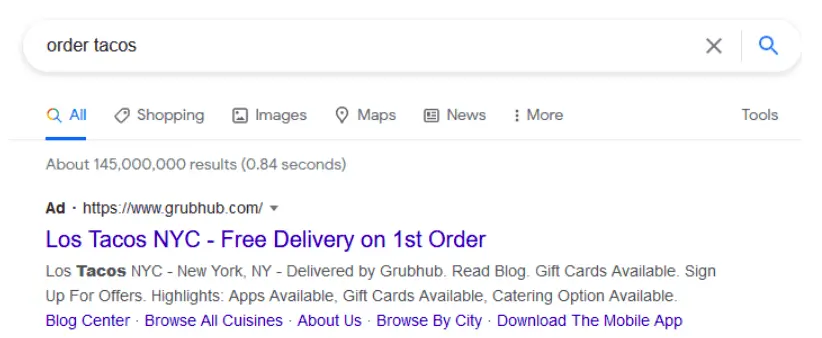As digital marketing takes the marketing world by storm, experts are finding more ways to reach, engage, and convert people to customers. One such method is cross-channel marketing, which we’ll explain from start to finish in this guide.
If you’re wondering how to harness this marketing approach, or how it differs from similar methods such as omnichannel marketing, you’re in the right place. We’ll also consider how cross-channel marketing can maximize the impact of your marketing efforts, and what it takes to create a cross-channel marketing campaign.
Want to jump to a specific section? Here’s a clickable table of contents:
- What is cross-channel marketing?
- What’s the difference between cross-channel marketing and multi-channel marketing?
- What are the benefits of cross-channel marketing?
- What are some examples of cross-channel marketing?
- What goes into a cross-channel marketing campaign?
- Key takeaways
But first, how does cross-channel marketing work?
1. What is cross-channel marketing?
Cross-channel marketing is all about using different marketing channels in tandem to achieve a common goal. Marketing channels are the different platforms through which you promote your product or service. Think SEO marketing, content marketing, email marketing, and social media marketing as examples. You’ll find a complete guide to the main marketing channels here.
Rather than using just one channel or platform to connect with your audience, cross-channel marketing takes an interconnected approach; you utilize a blend of channels to create a holistic and cohesive experience throughout the entire customer journey.
Let’s illustrate this with an example. Imagine you want to create a cross-channel marketing strategy for a company which sells healthy, pre-prepared meal boxes. How might the user journey look?
First, a lead (i.e. a potential customer) sees a paid Google ad about your healthy, hassle-free meal boxes. Intrigued but not ready to buy, they click the link which takes them to a blog post that explains the importance of balanced meals, and then compares some of the most popular meal box providers on the market. They enjoy the post, so decide to sign up to your email newsletter via the pop-up window that prompts them at the end of the blog article. They’re now on your mailing list!
The first email they receive follows up on the journey they’ve already started, explaining how your product or service can improve their life and help them solve a specific problem (such as wanting to eat healthily but not having time to cook). All these marketing channels work in unison with a single target—addressing one pain point.
Many people confuse multi-channel marketing with cross-channel marketing, but they aren’t quite the same. Multi-channel marketing also uses many marketing channels at once, but they each have different goals. Let’s explain the difference between these two approaches in more detail.

2. What’s the difference between cross-channel marketing and multichannel marketing?
While both cross-channel and multichannel marketing involve using multiple marketing channels, they aren’t exactly the same. The difference between cross-channel and multi-channel marketing is in the way they use the marketing channels.
Cross-channel marketing uses several channels to lead the buyer to one specific purchase or conversion. On the other hand, multichannel marketing uses many channels for different conversions. For instance, the brand’s Twitter account may lead you to join their mailing list, but their YouTube account focuses only on getting you to subscribe to the channel and grow their following.
In multi-channel marketing, efforts aren’t single-goal directed as they are with cross-channel marketing.
What about omnichannel marketing?
Besides multichannel and cross-channel marketing, there’s also omnichannel marketing. This also involves using multiple marketing channels, but in a super integrated way.
This kind of marketing focuses on creating a seamless customer-brand communication process. In omnichannel marketing, a user can switch from a company’s website on their computer to using the app—with minimal to no disruptions.
3. What are the benefits of cross-channel marketing?
We’ve seen how cross-channel marketing works, so it’s easy to imagine the benefits of this marketing method. But if you’re still unconvinced, we’ll share a few.
- Better customer experience: Cross-channel marketing prioritizes the customer or user by focusing on a specific issue across various platforms. It makes users feel seen—as more than just a number—which increases customer satisfaction and keeps them coming back.
- Repeated exposure: Research has shown that repeated exposure to a brand or service in ads can foster feelings of warmth in potential customers. This, in turn, can make viewers more likely to buy. By repeatedly connecting with customers across different platforms with information they find relevant, you increase your chances of converting.
- Increased reach: This applies to any kind of multi-channel marketing. The more channels you use, the higher your reach potential. In time, you’ll likely find some marketing channels more effective for reaching your target demographic—but it’s more reach all the same.
- Higher ROI: More effectively targeted ads, customer engagement, and better customer experience all lead to a higher return on investment (ROI). Overall, strong personalized marketing also builds a strong brand reputation that shows future customers that they can trust you.
- Integrated analytics: Because all marketing efforts have a united goal, it’s easier to keep track of key performance metrics like clicks, leads, and conversions. Multi-channel marketing, while raising brand awareness and creating leads, doesn’t nurture leads as well as cross-channel marketing does. Compared to cross-channel marketing, multi-channel marketing is a bit disorganized and that becomes evident when brands start to track their progress.

4. What are some examples of cross-channel marketing?
Let’s look at three simple examples of brands marketing the same product or service on more than one platform. In these examples of cross-channel marketing, we’ll try to chart the potential buyer’s course by putting ourselves in their shoes. You will notice that the marketing channels used are in bold.
Cross-channel marketing example: Sonos social media marketing

Source: Spiralytics
Sonos takes social media marketing a step further by engaging on a personal level with potential clients. It becomes cross-channel marketing as they nudge the contemplating buyer to their website. If Matt needed one sign that day, this might just have been it.
Cross-channel marketing example: Peppertype AI emails

In this welcome email from Peppertype.ai, they make sure to keep their service at the forefront of their new user’s mind. The first call-to-action takes you right back to their website. They’ve also included a video tutorial to help new clients enjoy their service and use it to the full.
Cross-channel marketing example: GrubHub paid ads

Grubhub uses paid ads to target a wide range of users. Type “order tacos” and their Google Ad comes up. Clicking on the link takes you straight to the Los Tacos Grubhub webpage, but to order you need to sign up, which shares your email with Grubhub and helps them stay in touch with you. All to lead you to an order of tacos. Brilliant, right?

5. What goes into a cross-channel marketing campaign?
Now, we know that cross-channel marketing works, but how do you actually execute a successful cross-channel marketing campaign? Keep these three factors in mind when deciding how to plan your campaign.
- Research: There is no marketing campaign without adequate research. Who is your target audience? Where do they hang out? Are they social media people or more search engine users? The result of your research should be detailed buyer profiles or personas. You can learn what a user persona is here, and follow this guide on how to define a user persona.
- Finding complimentary mediums: With buyer personas in hand, it’s easier to determine which marketing channels would work best for them. Not all channels work well together. For example, if you decide to lean heavily on SEO marketing, it would be wiser to invest more in content than socials, as these two go hand in hand.
- Analytics: An effective campaign requires serious data analysis. You need to know that your marketing approach is working beyond impressions. Clicks, subscriptions, traffic, and conversions are only a handful of metrics worth tracking.
You can learn more about how to create a compelling cross-channel customer experience in this guide.
6. Key takeaways
Cross-channel marketing is highly effective because it focuses on the customer. With this approach to marketing, brands and businesses use more than one marketing channel to promote a specific product or service. This method is more organized, targeted, and easier to track and analyze than basic multi-channel marketing.
If you’re considering cross-channel marketing, we say go for it! Remember, though, to do your homework and study successful examples.
And, if you’d like to learn more about digital marketing and how to succeed in the field, why not try out this free, 5-day short course? You could also check out the following:
